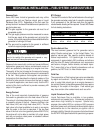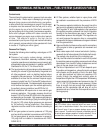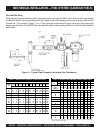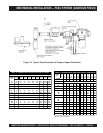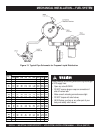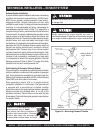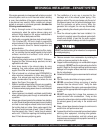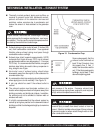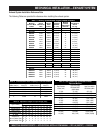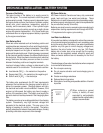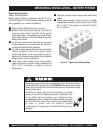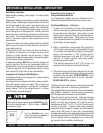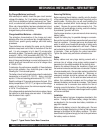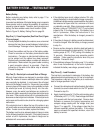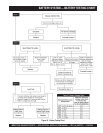
PAGE 48 — INDUSTRIAL GENERATOR SETS — APPLICATION & INSTALLATION MANUAL — REV. #4 (09/07/07)
MECHANICAL INSTALLATION — EXHAUST SYSTEM
Exhaust pipes are very hot and they can cause severe
personal injury or death from direct contact or from fire
hazard. Shield or insulate exhaust pipes if there is danger
of personal contact or when routed through walls or near
other combustible materials.
Figure 15. Condensation Trap
Exhaust back pressure must not exceed the allowable
back pressure of the engine. Excessive exhaust back
pressure reduces engine power, engine life, and may lead
to high exhaust temperatures and smoke.
Exhaust piping must be routed at least 12 inches (305
mm) from combustible construction. Use approved
thimbles where exhaust piping must pass through
combustible walls or ceilings.
Exhaust pipe (steel) expands approximately 0.0076
inches per foot of pipe for every 100°F rise in exhaust
gas temperature above room temperature (1.14 mm per
100°C rise). It is recommended that flexible, corrugated
stainless steel tubing be used to take up expansion in
long, straight runs of pipe.
Horizontal runs of exhaust piping should slope
downwards, away from the engine, to the outdoors or to
a condensation trap.
A condensation drain trap and plug should be provided
where piping turns to rise vertically. See Figure 15.
A rain cap should be used if the exhaust outlet is
vertical.
The exhaust system must terminate outdoors at a
location where engine exhaust will disperse away from
buildings, animals, and building air intakes. In addition,
the exhaust must not be allowed to blacken walls or
windows with soot.
It is highly recommended that the exhaust system be
carried up as high as practical on the downwind side of
buildings and that it is discharged straight up to maximize
dispersal.
Thermally insulate exhaust piping and mufflers as
required to prevent burns from accidental contact,
prevent activation of fire detection devices and
sprinklers, reduce corrosion due to condensate, and
reduce the amount of heat radiated to the generator
room.
Engine exhaust manifolds and turbocharger housing,
unless approved by the engine manufacturer, must never
be insulated. This can result in material temperatures that
can destroy the manifold and turbocharger.
Some codes specify that the
exhaust outlet terminate at
least 10 feet (3 meters) from
the property line, 3 feet (1
meter) from an exterior wall or
roof, 10 feet from openings into
buildings, and at least 10 feet
above the adjoining grade.
NOTE



